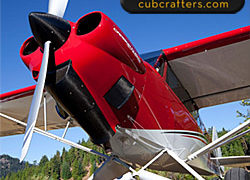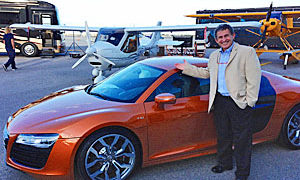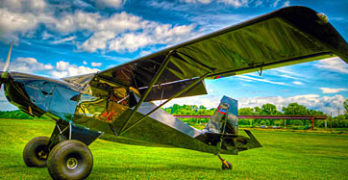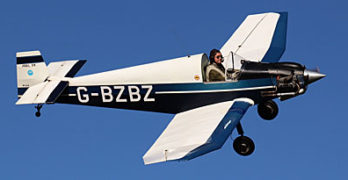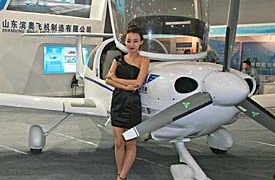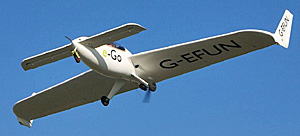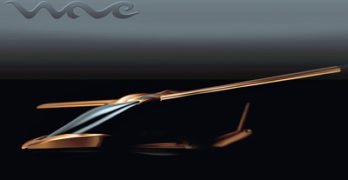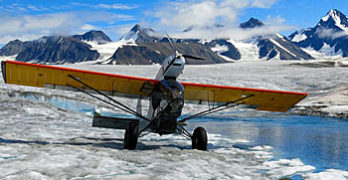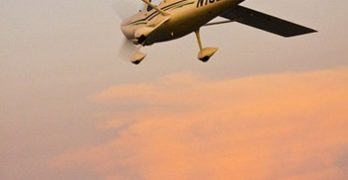Top selling aircraft models in the LSA space over the last couple years are manufactured by CubCrafters. It’s not too strong to say they’ve done well because the Yakima, Washington company got the formula right: Start with an iconic design; add features the original Piper version never dreamed of having; pump it up with lots more power; add in a finer finish, modern materials, and instruments; upgrade it steadily; and finish by doing it all in the USA. To continue building on the best performance among any LSA producer, the company announced a range of updates for their Carbon Cub SS and Sport Cub S2 Light-Sport Aircraft for 2014.
Soon we’ll release the first market share stats of 2013 and through the first nine months of the year CubCrafters has a clear lead. Last year, Cessna registered more aircraft but the Wichita giant has been completely quiet in 2013 giving room for CubCrafters to soar.
Search Results for : flight design ct
Not finding exactly what you expected? Try our advanced search option.
Select a manufacturer to go straight to all our content about that manufacturer.
Select an aircraft model to go straight to all our content about that model.
Planes, Cars, & More at Festivals of Speed
Festivals of Speed is not your “everyman” show tour. Aimed at wealthy folks, Joe Sabatini’s FoS extravaganza is quite different than the usual airshow fare. Some very distinctive aircraft drew plenty of attention … if you could tear your eyes away from a large gathering of magnificent supercars or scores of beautiful people. The event was based at the Orlando International Airport, which meant flying a few Light-Sport Aircraft into the Class B jetport and assembling in and around the giant hangar at Galaxy Aviation FBO. Opening night was hob-nobbing with the well-to-do types that can supposedly afford the goods on display. Via silent auction, Festival of Speed also benefits charities such as Arnold Palmer Hospital For Children.
For the first time, Light-Sport Aircraft were invited (and not asked to pay what surely is a steep price of entry). Representing the fleet were Progressive Aerodyne‘s SeaRey and Flight Design‘s CTLSi.
Just Aircraft Is a Decade-long Success Story
How do you take a laid-back approach to create a super exciting airplane? Schucks … it appears easy as falling off a log. The oversimplification denies how much energy and effort went into SuperSTOL. Because the folks at JustAircraft seem to be the most relaxed designers in America, don’t be fooled. Plenty of customers have seen the light that emanates from Walhalla, South Carolina. From the company’s unusual factory airstrip to the jaw-dropping performance of their super-duper STOL aircraft, Just Aircraft is a company you can’t — or at least shouldn’t — ignore. To gain more flavor of the extreme-looking but easy-flying aircraft, Just’s website has several videos that might fascinate you.
“Since the company was formed in 2002, Just Aircraft was focused on developing an aircraft that would excel in back country performance,” the company announced recently. “Starting with the Escapade, the company began shipping out kits.
Beetle Power in a Jaunty Jodel D9
“It is a truth universally acknowledged that a pilot not in possession of a good fortune will be in want of a VW-powered aircraft.” Well, I’m not entirely sure Jane Austen would’ve put it quite like that but one thing is irrefutable: If you want to fly an affordable aeroplane then it may well have a Beetle engine! And, here’s a very interesting factoid: the most produced aero-engine ever is probably Lycoming’s O-360, with around 250,000 made. However, Volkswagen made more than 21 million Beetle engines!
An interesting facet about lightweight taildraggers such as the D9 is that they have to be ‘flown’ all the time, even on the ground. Consequently even while taxiing I’m very aware of the wind, because even with differential braking turning out of wind can be a bit tricky. Of course, such simple machines have very simple checks, and while running through my generic SEP checks (which take the form of an unwritten ‘flow check’ around the cockpit), I often get the feeling (and particularly if I’ve flown something a bit more complex the day before) that I’ve forgotten something.
Emirates Airline Employees Build an RV-12
Earlier this year, the United Arab Emirates (UAE) announced in Abu Dhabi a regulation for Light-Sport Aircraft by the director-general of the General Civil Aviation Authority (GCAA), Saif Mohammed Al Suwaidi. GCAA reported, “Sport aviation enthusiasts will be given access to light aircraft of certain specifications only at licensed sport aviation clubs in the UAE, according to a statement by the civil aviation regulator.” This action represents another country to join the parade of those accepting ASTM industry consensus standards as a means of approving an aircraft. As we reported in March this year, UAE adds to USA, Australia, Columbia, Brazil, the EU, and China as countries that embrace either a nearly identical regulation to the U.S., or at least they accept the ASTM standards with some differences in their country. For example, some countries allow in-flight adjustable props where the U.S. does not, however, the ASTM standards accommodate that difference and can do so for other differences far more easily than a hodgepodge of regulations in each country.
LAMA (Europe) Investigates the China LSA Market
My LAMA Europe counterpart and friend, Jan Fridrich, took another trip to China in October as he attended Xi’an, said to be the largest General Aviation exhibition in the country. While the show was large with expansive, expensive exhibit stands, airplanes were sparser than events such as Aero Friedrichshafen. Like a few American events (thinking of AOPA’s just concluded Summit and NBAA’s giant show), Xi’an’s convention hall housed indoor displays while the “static” display of more airplanes was at an airport. U.S. organizers usually try to colocate these two displays. In contrast, Jan reported, “The static exhibition was at the airport in Pucheng, which is about 100 kilometers (62 miles) from Xi’an! Practically speaking, it was only accessible by bus and only during one official day and the journey takes 2.5 hours … Without Chinese friends it is very complicated to get anywhere.” Jan added that viewers at the airport were unable to get within 60 feet of airplanes.
Deregulation Works & e-Go Easily Goes
In the last days of October, another fascinating UK light aircraft took to the air after several years in development. The brainchild of Giotto Castelli and Tony Bishop takes advantage of SSDR, a British CAA initiative with the longer name of “Single Seat Deregulation,” proving as has the LSA movement that reduced government control allows innovation to blossom. The British program allows aircraft weighing less than 115 kilograms to bypass conventional certification.
A test pilot took the canard design up for its first official flight recently logging about 30 minutes up to 4,000 feet and 80 knots to conduct initial handling trials. After a post-flight inspection, data analysis, and refueling, he took it up again for its second, one hour flight to explore the envelope further, including stability, control and canard stalls. Then on October 30th, with notoriously difficult UK weather still cooperating, former BAE Systems chief test pilot Keith Dennison demonstrated e-Go to an invited audience of customers, investors, volunteers, suppliers, friends and family at Tibenham airfield in Norfolk, England.
Vickers Releases Another Sneak Peak at their Wave
Following our initial unveil of a new amphibian called “Wave” by Vickers Aircraft Company, more details were offered in their programmed slow-motion rollout of a new amphibian LSA candidate. In this update we hear about who will supply the prop and see some of the hardware components. I was informed that response was brisk after the last article suggesting the tempting way facts are released developed a sense of intrigue. One thing not said earlier is that principal Paul Vickers spent years in marine hull design and fabrication, addressing that aspect of engineering competency. As to the aerodynamic side, Paul wrote, “We are confident in achieving our performance figures as we have spent the pat three years producing and studying the hydrodynamics and aerodynamics needed for our particular flight envelope.” Vickers provided performance info to Catto props who developed and delivered a specific propeller to maximize to the airflow produced by Wave’s pusher configuration.
An “Ultralight” on Steroids? Alaska’s DoubleEnder
Recently I became of aware of one of those “Oh, wow!” airplanes, one that can generate much the same response as Just Aircraft‘s attention-riveting SuperSTOL. At first glance, DoubleEnder intrigued me. At opposite corners of the USA, we now have twin Rotax engine sport planes: the long proven AirCam in southern Florida, and a newer sensation, Double Ender in Alaska. Some readers may believe neither fits this website’s focus on LSA, light kits, and aircraft Sport Pilots can fly; like AirCam, Double Ender weighs too much (2,500 pounds gross) and has too many engines (dual Rotax 914 turbos each modified to 130 hp) to be an LSA. However, both are sport planes powered by Rotax engines. Plus, look at the accompanying photos. They inspire by showing flight qualities similar though not identical to AirCam. So, here’s a preliminary story of this unusual aircraft.
Skycatcher: To Be or to Be, Not
A story posted by Daniel McCoy, a reporter for the Wichita Business Journal, claims the star-crossed Cessna 162 Skycatcher will likely not enjoy the longevity and success of other notable Cessna icons such as the C-172 and C-150/152. Skycatcher was one of the first SLSA out of the gate for the new category created by FAA in 2004. But troubles with manufacturing and two highly publicized airframe parachute deployments during flight testing, including an airframe redesign after the first one, contributed to the dark cloud that seemed to follow the once-bright promise of Cessna’s entry. The market-perceived lackluster specifications sheet and barebones/industrial interior finish relative to many other LSA entries also contributed to the steady attrition in the once-1000-plus order sheet for the Skycatcher.
The news came yesterday at the NBAA (National Business Aviation Association) confab in Las Vegas. Company CEO Scott Ernest made the remark that Skycatcher had difficulty attracting market share and had lost a sizable percentage of its multi-year back orders.
- « Previous Page
- 1
- …
- 88
- 89
- 90
- 91
- 92
- …
- 145
- Next Page »


